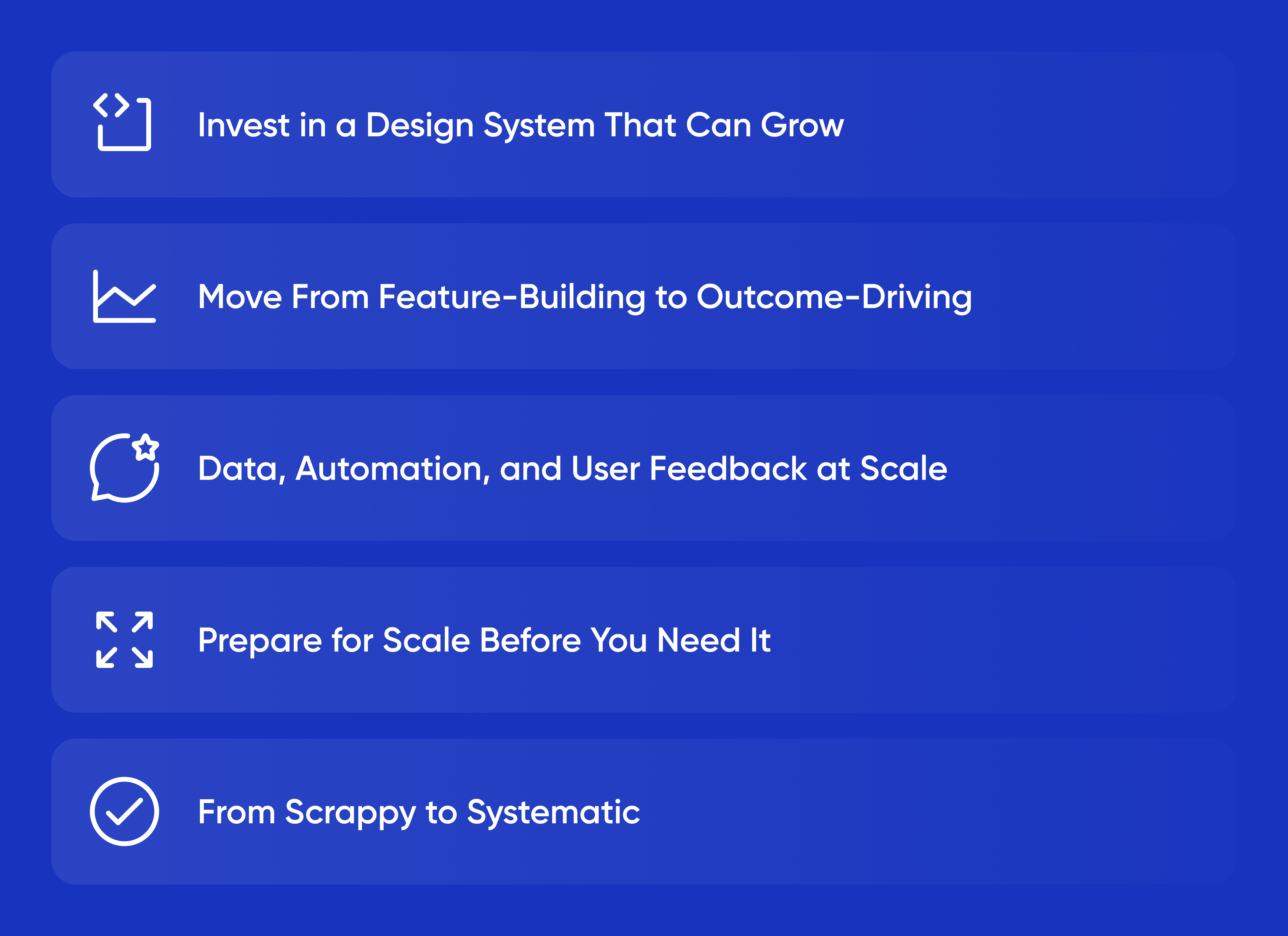It’s one thing to launch an MVP that solves a pain point for a handful of users. It’s another to transform that MVP into a SaaS product capable of supporting thousands — or even millions — of customers, each with their own use cases, behaviors, and expectations.
This transition, from startup idea to scalable SaaS platform, is where many teams hit turbulence. The product that worked well for 10 users starts to show cracks under the weight of real demand. Customer requests pile up. Performance lags. Internal systems become bottlenecks. But it doesn’t have to be this way.
With the right foundation and a forward-looking approach, your MVP can evolve into a SaaS business that delivers consistent value at scale, without breaking its core.
At Movadex, we’ve helped early-stage startups make this leap — from scrappy prototypes to stable, scalable platforms used by enterprise clients and growing communities. Here’s how to approach that evolution with clarity and control.

It Starts With Architecture
The most critical decisions in SaaS scalability are invisible to users: how data is structured, how requests are handled, how your infrastructure can flex under load. If your MVP was built to validate a problem, your SaaS must be built to withstand real-world pressure.
It’s not just about choosing the right cloud provider or setting up a CDN. It’s about modularizing services, separating concerns, and using scalable infrastructure patterns — whether that’s microservices, serverless functions, or managed services like Firebase, Supabase, or AWS Lambda.
Startups often worry about “overengineering.” And they should — at the MVP stage. But as you start growing, underengineering becomes the bigger risk. If you find yourself regularly patching performance issues or struggling to onboard more users without downtime, it’s time to re-architect.
Invest in a Design System That Can Grow
The early version of your product likely included one-off components, design inconsistencies, and UI that evolved out of speed, not strategy. That’s fine — for a while. But scale demands consistency. Customers notice when buttons behave differently, when modals don’t align, when one page loads instantly and another takes seconds.
A design system is more than a style guide. It’s a living structure for your product’s interface. It allows teams to build faster, reduce bugs, and maintain a coherent user experience as the product expands. Even small companies benefit from using tools like Figma component libraries, Storybook, or Tailwind UI.
If you're planning to grow a SaaS product over time, creating and enforcing a simple, scalable design system will save your team from UX debt and branding chaos.
Move From Feature-Building to Outcome-Driving
MVPs are built around core functionality. Scalable SaaS products are built around outcomes — the results your customers expect to achieve by using your software.
To get there, you need to stop thinking in terms of checklists and start thinking in terms of workflows. What does a successful day look like for your user? What does your product do to get them there faster, more reliably, or with less friction?
This shift in thinking changes how you prioritize your roadmap. Instead of adding more toggles and integrations, you start refining user journeys, deepening core functionality, and designing systems that grow with customer needs.
It’s not just more features. It’s better features, serving clearer goals.
Data, Automation, and User Feedback at Scale
With growth comes complexity. You’ll have more users doing more things — and more edge cases you never imagined. The only way to keep up is through data-driven iteration.
Set up systems that collect meaningful product usage insights: what features are used most, where users drop off, how behavior differs across segments. Pair this with automated event tracking, funnel analysis, and surveys triggered by behavior (not just time).
Don’t guess at scale. Measure, then act. Your support tickets, cancellation feedback, and top feature requests should all feed directly into your product decision-making loop.
Prepare for Scale Before You Need It
Many founders wait until things start to break before thinking about scalability. But smart teams prepare before the cracks show. They create architecture that can be upgraded. They maintain documentation. They set up logging and monitoring.
This doesn’t mean building for millions of users on day one. It means removing blockers for when growth happens. Can your auth system support SSO if you land an enterprise client? Can you segment users by plan, usage, or industry for analytics? Can you ship updates without taking the whole app offline?
Scalability isn’t a one-time upgrade. It’s an ongoing discipline.
From Scrappy to Systematic
The leap from MVP to scalable SaaS isn’t about losing your startup soul. It’s about evolving from a one-room workshop into a real company. A company with systems, reliability, clarity, and confidence in the value it delivers.
This doesn’t mean slowing down. It means building the processes and infrastructure to keep going fast — even when you’re supporting thousands of customers across multiple markets.
At Movadex, we help founders reimagine their MVPs into scalable SaaS platforms, ready for growth, investment, and enterprise-grade reliability. If your product is starting to feel stretched, or if you’re preparing to scale before your next round — now’s the time to evolve.
You already proved the idea. Now let’s prove the platform.




